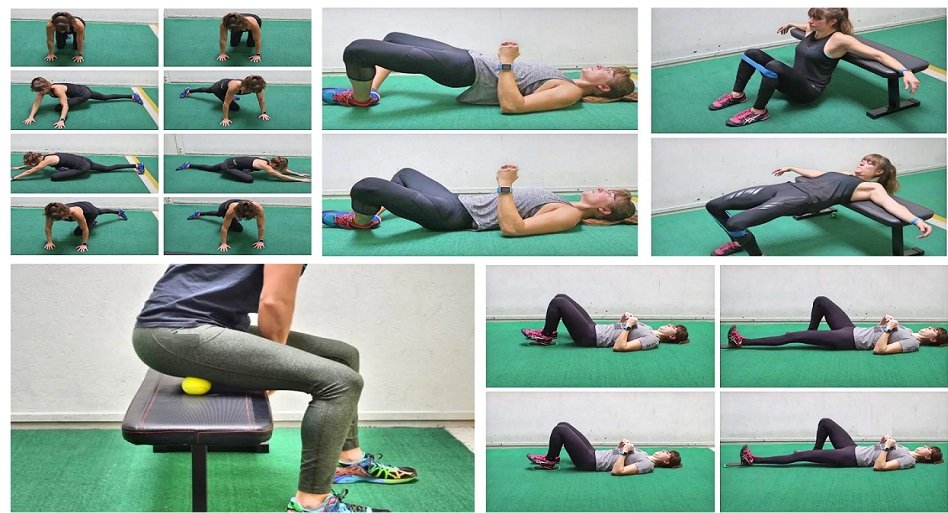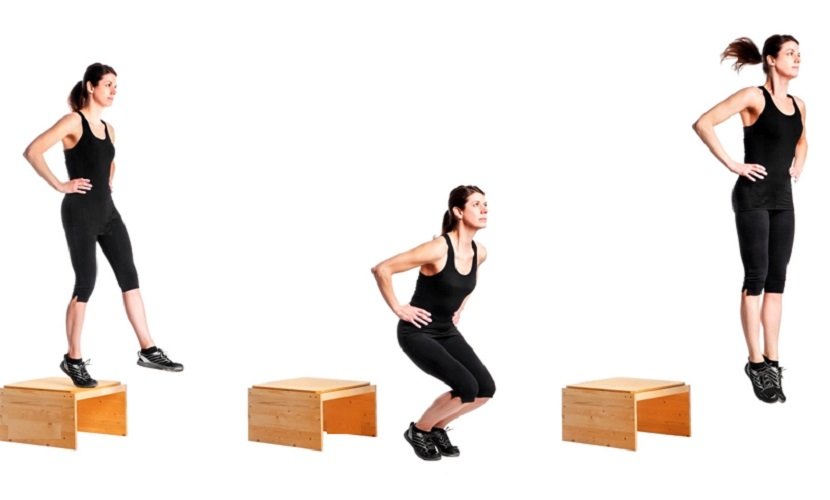Health And Fitness
Understanding the Different Types of Dietary Fats
Understanding the Different Types of Dietary Fats
Dietary fats play a crucial role in maintaining overall health. Understanding the different types of fat is essential for making informed dietary choices. Fats serve as a major energy source and aid in the absorption of vital vitamins. Consuming the right balance of fats can improve heart health and reduce disease risk. The American Heart Association recommends that 8-10% of daily calories come from polyunsaturated fats. Replacing saturated fats with healthier options like monounsaturated and polyunsaturated fats can lower the risk of heart disease. For more tips on maintaining a healthy lifestyle, visit ” Health And Fitness.”
What Are Dietary Fats?
Definition and Function
Basic definition of fats
Dietary fats consist of molecules known as triglycerides. Each triglyceride contains one glycerol molecule bonded to three fatty acids. These fatty acids vary in length and saturation, influencing their physical properties and health effects.
Role of fats in the body
Fats serve multiple roles in the human body. They provide a dense source of energy, offering nine calories per gram. Fats also help maintain healthy cell membranes, support brain function, and cushion organs. Additionally, fats aid in hormone production and help maintain healthy skin and hair.
Importance in Nutrition
Energy source
Fats act as a major energy source. The body stores excess energy from food as fat, which can be used later when energy intake is low. This energy reserve is crucial for survival during periods of food scarcity.
Absorption of vitamins
Fats play an essential role in the absorption of fat-soluble vitamins. Vitamins A, D, E, and K require dietary fats for proper absorption in the intestines. Without adequate fat intake, the body cannot effectively utilize these vital nutrients.
Cell structure and function
Fats are integral to cell structure and function. They form the lipid bilayer of cell membranes, providing structural integrity and fluidity. This lipid bilayer regulates the movement of substances into and out of cells, ensuring proper cellular function.
Types of Fat

Source: pexels
Saturated Fats
Sources of saturated fats
Saturated fats occur naturally in many foods. Animal products like meat, poultry, and full-fat dairy contain high levels of saturated fats. Certain plant oils, such as coconut oil and palm oil, also have significant amounts of saturated fats.
Health impacts
Saturated fats can raise LDL cholesterol levels. Elevated LDL cholesterol increases the risk of heart disease and stroke. Health experts recommend limiting saturated fat intake to less than 10% of daily calories.
Unsaturated Fats
Monounsaturated fats
Monounsaturated fats are considered heart-healthy fats. These fats can help reduce bad LDL cholesterol levels while maintaining good HDL cholesterol levels.
Sources
Monounsaturated fats are found in various plant-based oils. Olive oil, canola oil, and peanut oil are rich sources. Avocados and nuts, such as almonds and cashews, also provide monounsaturated fats.
Health benefits
Monounsaturated fats can lower the risk of heart disease. These fats also help manage blood sugar levels and support brain function. Including monounsaturated fats in the diet promotes overall well-being.
Polyunsaturated fats
Polyunsaturated fats include essential fatty acids that the body cannot produce. Omega-3 and omega-6 fatty acids fall under this category.
Sources
Polyunsaturated fats are abundant in fish, walnuts, and flaxseeds. Sunflower oil, corn oil, and soybean oil also contain high levels of polyunsaturated fats.
Health benefits
Polyunsaturated fats can reduce inflammation and lower the risk of heart disease. Omega-3 fatty acids, in particular, support brain health and improve cardiovascular function. A diet rich in polyunsaturated fats can enhance overall health.
Trans Fats
Sources of trans fats
Trans fats are artificially created through a process called hydrogenation. Processed foods, such as baked goods, snacks, and margarine, often contain trans fats. Some fried foods also have trans fats.
Health impacts
Trans fats can raise LDL cholesterol and lower HDL cholesterol. This imbalance increases the risk of heart disease, stroke, and type 2 diabetes. Health experts advise avoiding trans fats entirely to maintain optimal health.
Omega-3 and Omega-6 Fatty Acids
Sources
Omega-3 and omega-6 fatty acids belong to the polyunsaturated fats category. These essential fats play a critical role in maintaining health. The body cannot produce these fats, so dietary intake is necessary.
Omega-3 fatty acids are abundant in fatty fish such as salmon, mackerel, and sardines. Plant-based sources include flaxseeds, chia seeds, and walnuts. Certain oils, like flaxseed oil and canola oil, also provide omega-3s.
Omega-6 fatty acids are found in vegetable oils such as sunflower oil, corn oil, and soybean oil. Nuts and seeds, including walnuts and sunflower seeds, are additional sources. Processed foods often contain omega-6 due to the use of vegetable oils.
Health Benefits
Omega-3 and omega-6 fatty acids offer numerous health benefits. Omega-3s support heart health by reducing inflammation and lowering triglyceride levels. These fats also improve brain function and may reduce the risk of cognitive decline. Omega-3s contribute to eye health and may alleviate symptoms of depression.
Omega-6 fatty acids help regulate metabolism and support bone health. These fats also promote skin and hair growth. Omega-6s play a role in maintaining the reproductive system. However, excessive omega-6 intake can lead to inflammation, so balance with omega-3s is crucial.
A diet rich in omega-3 and omega-6 fatty acids can enhance overall well-being. Including these fats in daily meals supports cardiovascular health and cognitive function. The American Heart Association recommends consuming fish at least twice a week to ensure adequate omega-3 intake.
Practical Tips for Including Healthy Fats in Your Diet

Source: unsplash
Choosing the Right Fats
Reading food labels
Reading food labels helps identify the types of fat in foods. Labels list the total fat content and break it down into saturated, trans, monounsaturated, and polyunsaturated fats. Look for foods with higher amounts of monounsaturated and polyunsaturated fats. Avoid products with trans fats. The American Heart Association recommends limiting saturated fats to less than 10% of daily calories.
Cooking tips
Cooking methods can influence fat intake. Use oils rich in unsaturated fats, like olive or canola oil, for sautéing and frying. Baking or grilling instead of frying reduces the need for added fats. Add nuts or seeds to salads for a healthy fat boost. Incorporate fatty fish like salmon into meals to increase omega-3 intake. Omega-3 fats help prevent heart disease and stroke.
Balancing Fat Intake
Recommended daily intake
Balancing fat intake involves understanding recommended daily amounts. Health experts suggest that fats should make up 20-35% of total daily calories. Polyunsaturated fats should account for 8-10% of daily calories. Monounsaturated fats should also be a significant part of the diet. Saturated fats should remain below 10% of daily caloric intake.
Balancing different types of fats
Balancing different types of fats ensures optimal health benefits. Include a variety of fat sources in the diet. Use plant-based oils like sunflower, corn, and soybean oils. Eat nuts, seeds, and avocados regularly. Consume fatty fish twice a week for omega-3 fatty acids. Omega-3 fats manage inflammation and improve heart health. Limit intake of saturated fats from animal products and certain plant oils. Avoid trans fats entirely to maintain heart health.
Understanding the different types of dietary fats is crucial for maintaining overall health. Making informed dietary choices can significantly impact heart health and reduce disease risk. A balanced diet that includes healthy fats like monounsaturated and polyunsaturated fats promotes well-being. The American Heart Association recommends consuming fish at least twice a week to ensure adequate omega-3 intake. By choosing the right fats and balancing fat intake, individuals can support cardiovascular health and improve their quality of life. For more tips on maintaining a healthy lifestyle, visit “Select Health And Fitness\tHealth And Fitness.”
FAQ: Understanding the Different Types of Dietary Fats
1. What are the main types of dietary fats?
- Saturated Fats: These fats are typically solid at room temperature and are found in animal products like meat, butter, and cheese, as well as some plant oils like coconut and palm oil.
- Unsaturated Fats: These fats are usually liquid at room temperature and are found in plant-based oils, nuts, seeds, and fish. They are divided into monounsaturated fats and polyunsaturated fats.
- Trans Fats: These are artificial fats created through a process called hydrogenation, which makes liquid oils solid. They are found in some processed foods, margarine, and baked goods.
2. What are the health effects of saturated fats?
- Saturated fats have been linked to increased levels of LDL (bad) cholesterol, which can contribute to heart disease. However, recent research suggests that the relationship between saturated fat and heart disease is more complex than previously thought.
3. How do unsaturated fats benefit health?
- Monounsaturated Fats: These fats can help reduce bad cholesterol levels in the blood, which can lower the risk of heart disease and stroke. They are found in olive oil, avocados, and nuts.
- Polyunsaturated Fats: These include omega-3 and omega-6 fatty acids, which are essential fats that the body needs for brain function and cell growth. Omega-3s, found in fatty fish like salmon, are particularly beneficial for heart health.
4. Why are trans fats considered harmful?
- Trans fats are associated with an increased risk of heart disease, stroke, and type 2 diabetes. They raise bad cholesterol (LDL) levels while lowering good cholesterol (HDL) levels. Many health organizations recommend avoiding trans fats altogether.
5. How can I identify trans fats in food products?
- Check the nutrition labels for “partially hydrogenated oils,” which indicate the presence of trans fats. Even if a product claims to have “0 grams of trans fat,” it may still contain small amounts if partially hydrogenated oils are listed in the ingredients.
6. What is the recommended daily intake of fats?
- The Dietary Guidelines for Americans suggest that 20% to 35% of your daily calories should come from fats. It’s important to focus on getting most of your fats from unsaturated sources, such as fish, nuts, and plant-based oils.
7. Are all saturated fats bad for you?
- Not all saturated fats are equally harmful. For example, some studies suggest that the saturated fat in dairy products may not have the same negative impact on heart health as the saturated fat in processed meats. However, moderation is key.
8. What are omega-3 and omega-6 fatty acids, and why are they important?
- Omega-3 and omega-6 are types of polyunsaturated fats that are essential for the body. Omega-3s, found in fatty fish, flaxseeds, and walnuts, are known for their anti-inflammatory properties and heart health benefits. Omega-6s, found in vegetable oils and nuts, are also important for health but should be balanced with omega-3 intake.
9. How can I incorporate more healthy fats into my diet?
- You can increase your intake of healthy fats by using olive oil or avocado oil for cooking, adding nuts and seeds to your meals, eating fatty fish like salmon regularly, and choosing foods rich in omega-3 fatty acids.
10. Should I completely avoid fats in my diet?
- No, fats are an essential part of a healthy diet. They provide energy, support cell growth, protect organs, and help your body absorb certain nutrients. The key is to choose the right types of fats and consume them in moderation.
Health And Fitness
Walgreens Closing 1,200 Stores: A Major Shift in U.S. Retail Pharmacy

Walgreens has announced plans to close 1,200 stores across the U.S. by 2027 in an effort to optimize its operations. This decision comes after facing profitability challenges, increased competition, and market shifts. CEO Tim Wentworth cited underperforming locations and a difficult consumer environment as primary reasons for the closures. The company aims to focus on its core retail pharmacy business while cutting costs and improving long-term growth potential.
Why Is Walgreens Closing Stores?
Walgreens faces multiple challenges, including shrinking profit margins and decreased foot traffic. In response to inflation and lower consumer spending, the company is streamlining operations by targeting underperforming locations for closure. The ongoing shift to online pharmacies and the rise of competitors like CVS have also put pressure on Walgreens’ brick-and-mortar stores.
Impact on Customers and Communities
Many customers worry about losing access to convenient pharmacy services, especially in smaller communities. However, Walgreens aims to maintain robust service levels by focusing on profitable stores and enhancing its digital offerings. The closures could create opportunities for local pharmacies to fill the gap left by Walgreens in certain areas, though concerns remain about the broader impact on healthcare access.
What’s Next for Walgreens?
Walgreens is not just shutting stores but also revamping its business strategy. The company is reducing its stake in VillageMD and refocusing on pharmacy operations. Walgreens is not just closing stores; the company is also implementing a major shift in its business strategy. This includes reducing its stake in VillageMD and refocusing on its pharmacy operations.
The company will continue to offer retail health services, but with a leaner footprint and improved operational efficiency. As these changes unfold, consumers may see further shifts in how and where they receive pharmacy services. The company’s strategic shift is a response to a changing retail landscape and the need to adapt to changing consumer preferences. Walgreens is making a significant investment in its pharmacy operations to ensure that it can provide the best possible pharmacy care for its customers.
Most Searched Queries Regarding Walgreens Closures:
- “Why is Walgreens closing stores?”
- “List of Walgreens stores closing”
- “Impact of Walgreens closures on healthcare”
- “Alternatives to Walgreens pharmacy services”
Walgreens’ future will depend on how well it adapts to changing consumer preferences and a highly competitive retail landscape.
Financial Struggles & Reduced Profitability
Walgreens has been struggling with reduced profit margins due to inflation, higher shrink (inventory losses from theft and errors), and declining foot traffic. The ongoing changes in the retail pharmacy landscape have prompted Walgreens to reevaluate its operations and shutter underperforming stores. This decision is part of a larger effort to cut costs, streamline its footprint, and optimize the company’s future profitability.
The company is also seeking to improve its ability to compete with other retail pharmacies, such as CVS Health and Rite Aid. Walgreens is also looking to improve its ability to compete with online retailers like Amazon, which have been expanding their healthcare offerings. The decision is also part of a larger effort to cut costs, streamline its footprint, and optimize the company’s future profitability.
Impact on Stock Performance
Walgreens’ financial challenges have caused its shares to drop significantly—over 45% in the last year. In response, the company also lowered its profit forecast for fiscal year 2024 to between $2.80 and $2.95 per share, down from the previous estimate of $3.20 to $3.35 per share.
Customer Service Adjustments
Though the store closures will reduce Walgreens’ physical presence, the company plans to enhance its digital services. It is also reworking its health services, including retail health clinics and pharmacy services, to focus on high-performing regions. Walgreens is reducing its involvement in secondary ventures, like VillageMD, to realign with its core retail pharmacy business.
Workforce Reductions
As part of its cost-cutting strategy, Walgreens recently announced that it will be closing 1,200 stores by 2027. The company also revealed that it will be reducing its workforce, including layoffs across its corporate and retail divisions. While the exact number of job cuts has not been specified, the company has stated that it will be making the necessary changes to ensure its long-term success. This includes layoffs across its corporate and retail divisions, though the company has not specified the exact number of job cuts.
Questions from Consumers
- “How many Walgreens stores are closing?”
- “What will happen to Walgreens employees?”
- “Will Walgreens’ pharmacy services be affected by store closures?”
- “Are there alternatives to Walgreens in my area?”
The closures are part of Walgreens’ strategy to address the rapidly changing retail pharmacy market, ensuring long-term growth while navigating current economic challenges.
FAQs on Walgreens’ Store Closures
1. How many Walgreens stores are closing?
Walgreens plans to close around 1,200 stores by 2027, primarily focusing on underperforming locations.
2. Why is Walgreens closing stores?
Walgreens is closing stores due to declining profit margins, high operational costs, inflationary pressures, and competition from other pharmacies and online retailers.
3. Will pharmacy services be impacted?
While some stores will close, Walgreens intends to enhance its digital pharmacy services to maintain customer access to prescriptions.
4. What will happen to Walgreens employees?
Layoffs are expected as a result of these closures, but the company has not specified the total number of jobs affected.
5. How will this impact local communities?
Closures could lead to reduced access to pharmacy services in certain areas, particularly smaller communities, but Walgreens is working to consolidate operations to maintain essential services.
6. How do I find out if my local Walgreens is closing?
The company will release specific lists of store closures over time, so keep an eye on official announcements or check with your local store.
7. Are there alternatives to Walgreens?
Customers can explore other national chains like CVS, Rite Aid, or local pharmacies, depending on location and services offered.
Health And Fitness
How to Choose a Rehab for Lasting Recovery

Choosing the right rehabilitation center can be one of the most transformative decisions in your journey to sobriety. It’s more than just picking a place—it’s about finding the support system that will walk with you toward lasting recovery and a better quality of life. Did you know that 80% of patients report improved health after completing their programs? With the right rehab center, your chances of staying drug-free after treatment rise to as much as 95%.
The path to recovery is deeply personal, and the rehab center you choose can play a pivotal role in shaping your future. This decision can be the key to unlocking a healthier, happier life. You deserve the best care, so take the time to make an informed choice that will support your long-term success.
Identifying Personal Treatment Goals
Assessing Your Needs
Defining your personal treatment goals helps you focus on what truly matters in your recovery journey. What do you want to achieve? Is it maintaining sobriety, improving your mental health, or rebuilding relationships? By being clear about your goals, you can choose a rehab center that aligns with your vision for a better future.
It’s also important to understand the level of care you need. Some people may thrive in an intensive inpatient program, while others find success in outpatient care. Take a moment to honestly assess your situation. The right support can make all the difference, guiding you toward lasting recovery and a life full of possibility.
Consulting with Treatment Providers
Health And Fitness
Boost Muscle Power Workouts for Athletes

How to Boost Muscle Power: Top Workouts for Athletes
Muscle power is crucial for athletic performance, as athletes depend on generating power rather than solely focusing on maximum strength. Muscle Power Workouts for Athletes are designed to enhance power output, which is a key predictor of success in various sports and also aids in improving mobility among older adults. These workouts are essential for health and fitness, as they focus on exercises that increase explosive strength, tailoring muscles for specific sports. By engaging in these targeted training sessions, athletes can achieve peak performance.
Definition and Importance
What is Muscle Power?
Muscle power refers to the ability of muscles to exert force rapidly. This concept combines strength and speed to produce explosive movements. Athletes rely on muscle power to perform actions like jumping, sprinting, and throwing. The relationship between strength and speed defines muscle power. Training programs often focus on enhancing this attribute to improve athletic performance.
Why is it crucial for athletes?
Athletes benefit from increased muscle power in several ways. Enhanced muscle power contributes to better performance in sports-specific tasks. Activities such as sprinting, jumping, and changing direction quickly require high levels of muscle power. Greater muscle power also reduces the risk of injury by improving the body’s ability to handle dynamic movements. According to research, muscular strength and power significantly influence athletic performance, impacting speed, endurance, and resilience.
Factors Affecting Muscle Power
Muscle Fiber Types
Muscle fibers play a crucial role in determining muscle power. There are two main types of muscle fibers: Type I (slow-twitch) and Type II (fast-twitch). Fast-twitch fibers generate more power and are essential for explosive movements. Athletes with a higher proportion of fast-twitch fibers tend to excel in power-based activities. Training can enhance the efficiency of these fibers, leading to improved performance.
Neuromuscular Efficiency
Neuromuscular efficiency refers to the ability of the nervous system to communicate effectively with muscles. Efficient neuromuscular function allows for quicker and more powerful muscle contractions. Athletes can improve neuromuscular efficiency through specific training techniques. Exercises that emphasize speed and coordination help enhance this connection. Improved neuromuscular efficiency results in better force production and overall athletic performance.
Muscle Power Training for Beginners: Improve Flexibility and Mobility

Flexibility is a crucial component of physical fitness, but for many people, tightness and stiffness in the body can make stretching uncomfortable or intimidating. If you’re not very flexible, this 8-minute stretching routine is designed for you. It’s simple, requires no equipment, and addresses all the major muscle groups to help improve your mobility. Say goodbye to complicated yoga poses and advanced stretches—this is all about practical movements that will gently loosen up your muscles and joints.
1. Lumbar Rotation Stretch
This stretch targets the lower back and hips, two areas where many people experience tightness.
How to Do It:
- Lie on your back with your right knee bent.
- Use your left hand to grab the outside of your right knee and gently pull it over to your left side, allowing your body to twist.
- You should feel a stretch through your lower back and hip.
- Hold this position for 30 seconds.
Tip: Keep your movements slow and controlled, and only twist as far as is comfortable for your body.
2. Supine Hamstring Stretch
Hamstrings are often one of the tightest muscle groups, especially if you sit for long periods.
How to Do It:
- Lie on your back with your left leg straight.
- Cup both hands behind your right knee.
- Slowly straighten your right leg toward the ceiling until you feel a stretch in the back of your thigh (hamstring).
- Hold for 30 seconds, then switch legs.
Tip: Be sure not to force your leg straight; aim for a gentle stretch without pain.
3. Piriformis Stretch
The piriformis is a small muscle deep in the hip that can cause discomfort when tight. This stretch can relieve tension in the hips and lower back.
How to Do It:
- Cross your right leg over your left knee, forming a “figure four.”
- Grab your left knee and pull it toward your chest until you feel a stretch in your right hip.
- Hold for 30 seconds, then switch sides.
Tip: This is an excellent stretch for reducing tightness that contributes to sciatica or hip discomfort.
4. Tall Kneeling Hip Flexor Stretch
Your hip flexors can get tight from sitting too much, which can affect your posture and mobility. This stretch helps to lengthen those muscles.
How to Do It:
- Kneel on your right knee and take a large step forward with your left foot.
- Shift your weight forward, keeping your back straight, until you feel a stretch in the front of your right hip.
- Hold for 30 seconds, then switch sides.
Tip: Keep your torso upright and avoid arching your lower back.
5. Kneeling Hamstring Stretch
This is another great stretch for your hamstrings, but from a kneeling position.
How to Do It:
- From the tall kneeling position, shift your weight back onto your right knee.
- Straighten your left leg in front of you.
- Keep your back straight and lean forward from the hips until you feel a stretch in your left hamstring.
- Hold for 30 seconds, then switch sides.
Tip: Engage your core to avoid rounding your back during this stretch.
6. Seated Spine Rotation Stretch
Spinal mobility is essential for everyday movements like bending and twisting. This stretch helps to loosen up your mid and upper back.
How to Do It:
- Sit with your legs out in front of you.
- Cross your left leg over your right, planting your left foot flat on the floor.
- Twist your torso to the left, placing your right elbow on the outside of your left knee for leverage.
- Hold the stretch for 30 seconds, then switch sides.
Tip: This stretch may cause a few pops in your back, but that’s perfectly normal as long as there’s no pain.
7. Child’s Pose Stretch
The child’s pose is a classic yoga stretch that targets the entire back, especially the lats and spine.
How to Do It:
- Start on all fours (hands and knees).
- Sit your hips back toward your heels while reaching your arms forward.
- Tuck your chin into your chest and sink into the stretch, feeling the lengthening in your back.
- Hold for 30 seconds.
Tip: Breathe deeply and let your body relax into the stretch for maximum benefit.
8. Upper Back Extension
This movement opens up the chest and stretches the upper back, perfect for counteracting poor posture from sitting.
How to Do It:
- Sit or stand with your fingertips behind your head.
- Bring your elbows together and fold forward slightly.
- Then, lift your chest and elbows up, opening through your upper back and chest.
- Repeat this movement three times.
Tip: This dynamic stretch is excellent for improving posture and chest mobility.
9. Upper Traps Stretch
The trapezius muscles in the neck and upper back can get very tight, especially if you spend a lot of time hunched over a computer or phone.
How to Do It:
- Tilt your head to the left, bringing your left ear toward your left shoulder.
- Use your left hand to gently apply pressure to the right side of your head.
- Hold for 30 seconds, then switch sides.
Tip: Keep the stretch gentle—this is a sensitive area, and too much pressure can cause discomfort.
Plyometric Exercises

Box Jumps
Box jumps enhance explosive power. Athletes use box jumps to improve vertical leap and agility. The exercise involves jumping onto a raised platform. Box jumps require coordination and strength. Consistent practice increases muscle power and reduces injury risk.
Depth Jumps
Depth jumps focus on rapid force production. Athletes step off a box and immediately jump upon landing. This exercise trains muscles to react quickly. Depth jumps improve neuromuscular efficiency. Athletes gain better performance in sports requiring quick direction changes.
Olympic Weightlifting
Clean and Jerk
The clean and jerk builds total body power. Athletes lift a barbell from the ground to overhead. This movement combines strength and speed. The clean and jerk enhances muscle power and coordination. Regular training improves athletic performance in explosive sports.
Snatch
The snatch develops explosive strength. Athletes lift a barbell from the ground to overhead in one motion. This exercise requires precision and power. The snatch increases muscle power and flexibility. Athletes benefit from improved performance in dynamic sports activities.
Sprint Training
Short Distance Sprints
Short distance sprints boost speed and power. Athletes run at maximum effort for short distances. This training enhances fast-twitch muscle fibers. Short sprints improve acceleration and agility. Athletes gain an edge in sports demanding quick bursts of speed.
Hill Sprints
Hill sprints increase lower body strength. Athletes sprint uphill to build muscle power. This exercise challenges endurance and explosiveness. Hill sprints improve cardiovascular fitness and leg strength. Athletes experience enhanced performance in endurance-based sports.
Case Studies show that integrating these Muscle Power Workouts for Athletes leads to significant improvements. Research highlights the effectiveness of combining strength and ballistic-power training. Athletes achieve better results through targeted programs. These workouts reduce injuries and enhance overall performance.
Programming Ideas for Power Development
Periodization Techniques
Linear Periodization
Linear periodization involves a structured progression in training intensity. Athletes start with high-volume, low-intensity workouts. Over time, the focus shifts to low-volume, high-intensity sessions. This method enhances muscle power by gradually increasing the load on muscles. Research shows that linear periodization can lead to significant strength gains. Coaches often use this technique to prepare athletes for peak performance during competitions.
Undulating Periodization
Undulating periodization offers more variation in training. Athletes alternate between different intensities and volumes within a week. This approach prevents training plateaus and keeps workouts engaging. Studies indicate that undulating periodization can produce similar strength gains as linear models. Athletes benefit from the flexibility and adaptability of this method. Coaches can tailor programs to meet specific needs and goals.
Integrating Power Workouts into Training
Weekly Training Schedule
A well-structured weekly training schedule maximizes power development. Athletes should include a mix of strength, speed, and endurance sessions. Each week might feature two to three power-focused workouts. These sessions could involve plyometrics, Olympic lifts, or sprint drills. Rest days are crucial for recovery and muscle growth. Monitoring progress helps in adjusting the schedule for optimal results.
Balancing Power and Endurance
Balancing power and endurance is essential for comprehensive athletic performance. Athletes should incorporate both elements into their training regimen. Power workouts enhance explosive strength and speed. Endurance sessions build stamina and cardiovascular health. A balanced approach ensures athletes maintain peak performance across various sports demands. Coaches can design programs that integrate both aspects effectively.
-

 Health And Fitness6 months ago
Health And Fitness6 months agoPepsi Zero Sugar vs Diet Pepsi: Which Is Healthier?
-

 Health And Fitness5 months ago
Health And Fitness5 months agoHow to Choose a Rehab for Lasting Recovery
-

 News6 months ago
News6 months agoKolkata Doctor Case: Tragic Story of Dr. Moumita Debnath
-

 News6 months ago
News6 months agoLondon King Opens Up About Her Relationship with Rob Schneider
-

 News6 months ago
News6 months agoSunita Williams’ Space Dilemma: Never Alone, Always Brave
-

 Tech Innovation5 months ago
Tech Innovation5 months agoHuawei Mate XT: A Detailed Review of the World’s First Tri-Fold Smartphone
-

 Sports4 months ago
Sports4 months agoChicago Marathon 2024 Results
-

 Sports6 months ago
Sports6 months agoArshad Nadeem Winning Moments Javelin Throw Final Highlights


